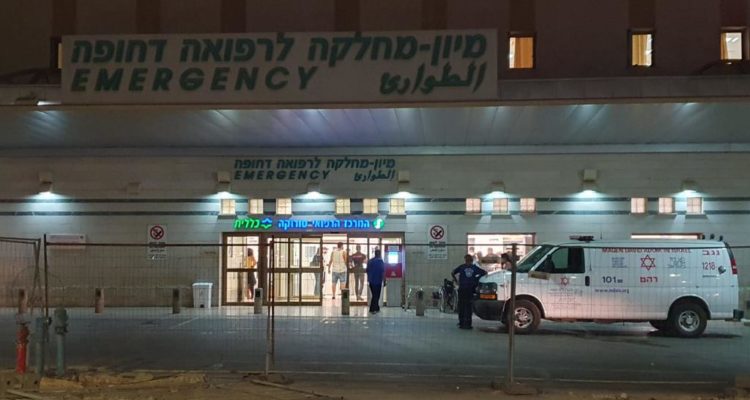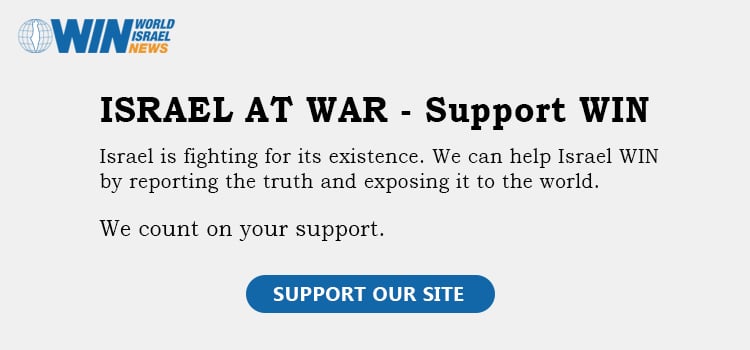Analyzing medical staff’s response to Oct. 7th will provide lifesaving preparedness for scenarios on the northern front and beyond.
By Maytal Yasur Beit-Or, JNS
On Oct. 7, Israel’s healthcare system encountered its largest-ever mass casualty event, treating 1,456 wounded people in a single day, with 626 at Soroka Medical Center in Beersheva and approximately 350 at Barzilai Medical Center in Ashkelon, both in the south of the country.
While the healthcare system had practiced scenarios involving around 150 casualties, it successfully handled a tenfold number.
The Ministry of Health’s command center was operational from 7 a.m., and Soroka and Barzilai hospitals were engaged in mass casualty incident (MCI) response as of 8 a.m.
Medical and nursing teams, social workers, administrative staff and cleaners arrived at their own initiative.
Hundreds of wounded were admitted and treated all while air-raid sirens were blaring and uncertainty loomed.
“It was a day of heroic acts unfolding moment by moment,” and “that day, Israel’s healthcare system made history”—are just some of the descriptions of the system’s performance.
However, the healthcare system appears to be making every effort to prevent the public release of a professional investigation into the treatment given on that day.
These conclusions are crucial for preparedness for scenarios on the northern front and beyond.
Conclusions from a committee headed by Professor Nachman Ash are expected to be submitted in the coming days. However, this is a “quality assurance and monitoring committee,” which by law is confidential, and its findings will only be presented to the Health Ministry’s director-general.
The committee is investigating specific cases of severely wounded or deceased patients, which is why the ministry notes patient confidentiality as another reason for secrecy.
A committee of surgeons (the National Council for Surgery) that conducted a professional investigation refrained from publishing its conclusions, which are also only available to the Health Ministry’s director-general.
The State Comptroller’s Office is also examining the healthcare system’s performance on Oct. 7.
Another professional committee—the National Council for Trauma, composed of trauma experts, published conclusions on Oct. 19, praising the system’s performance while suggesting improvements, mainly in secondary triage, transferring patients from Soroka and Barzilai hospitals, which were dealing with an overwhelming number of patients, to other facilities.
However, the Ministry of Health dismissed the committee’s conclusions outright, stating that “those who were not present on the scene have no right to criticize.”
The council chairman even resigned from his (voluntary) position shortly after submitting the conclusions due to “the Ministry of Health’s unwillingness to accept professional and constructive criticism about deficiencies.” The council itself was disbanded without a new one being appointed.
Criticism replaced by dispute
A senior health official told Israel Hayom: “My primary worry is the apparent attempt to sweep the investigation under the rug. People think this is just a turf war between hospital directors fighting over wounded patients. That’s not it at all. Our performance was subpar. We could have coordinated better instead of being afraid to properly examine what went wrong.
“So far, anyone voicing criticism has been shut down. Barzilai and Soroka did heroic work that day, but the system as a whole functioned only adequately. It’s vital that we thoroughly investigate this.”
Regarding the dynamics between hospital directors and the Ministry of Health in investigating the incident, the senior official said: “When hospitals are overwhelmed, it’s clear that treatment efficacy suffers. The system did not function at its best during that first day, but the worst part is that everyone has gone into defense mode. There’s an ongoing dispute that leaves no room for criticism.”
A trauma expert voiced worry about the absence of clear conclusions and insights. “So far, the only conclusion from the event has been to disband the National Trauma Council,” he said.
“It troubles me that Nachman Ash’s committee, comprised of good and well-intentioned people, will not issue conclusions. Knowing who is on the committee, I’m certain they did not whitewash anything. But it’s important that we investigate and understand how to improve.”
While trying to rapidly identify the scale of the event, a massive influx of wounded individuals overwhelmed both Soroka and Barzilai hospitals. Even three hours after both hospitals requested patient regulation, around 300 casualties arrived at Soroka and over 180 at Barzilai during the afternoon.
At the same time, in central Israel, Rabin Medical Center in Petach Tikvah had only seven wounded, Ichilov Hospital at Sourasky Medical Center in Tel Aviv had six, Sheba Medical Center in Ramat Gan’s Tel Hashomer neighborhood had around 20, and Hadassah Medical Center in Jerusalem had 23. They had dozens of operating rooms ready and prepared.
Failures in patient transfer
One of the main issues raised regarding the treatment of casualties that day was the lack of a planned transfer of patients from the overwhelmed southern hospitals to medical centers in central Israel, which had been on high alert since the early morning hours.
“Soroka is unfortunately accustomed to such events, and our emergency protocols kick in swiftly,” said Dr. Shlomi Codish, director of Soroka Medical Center. “When we received the first signs of an infiltration, we prepared for a mass casualty event. We didn’t wait for instructions from the Ministry of Health. At no point during the day did we lack medical staff.
“Between 10 and 11 a.m., we sent three notifications that we were full. We asked that no helicopters land here and no ambulances be directed to us. But I understand the reality in which private vehicles were used to evacuate wounded.
“Around 2 p.m., a Ministry of Health representative arrived and instructed us to transfer 100 patients. In the first 24 hours, we transferred 140 patients, and another 40 critically injured overnight.
“I understand the frustration of other hospitals, but I’m not trying to justify myself. Far more people were evacuated from our hospital than remained. We conducted a thorough review and did not find a single case of a patient harmed by lack of treatment. No one waited with an open fracture. We did not exceed 100% occupancy that day. We opened an additional intensive care unit and an extra surgical ward. It was a day measured by unprecedented standards,” Codish said.
Immense pressure, around the clock
Professor Chezy Levy, medical director of Barzilai Medical Center, described what happened that morning:
“Around 9 a.m., I saw that our 10 operating rooms, imaging facilities, and emergency room were full. I notified the Ministry of Health that I was initiating secondary triage. I prepared a hall in the ER where we held patients designated to be transported to other hospitals. By around 9:30 a.m., I had already redirected cases to central Israel. We saw 350 casualties on the first day, half of them in serious or moderate condition.”
Levy added, “Our teams worked under immense pressure, around the clock. The constant drills and exercises we conducted, being located near the [Gaza] border, proved tremendously helpful. During that first day, there were several [rocket] hits on the hospital itself, on the pedestrian bridge between the buildings, at the Child Development Center, in the Gynecology Department, and one strike on the fence that shattered windows in the Pediatrics Department.
“Typically, the secondary triage is done by Magen David Adom [the national emergency service], but there were not enough ambulances. There’s no doubt MDA was preoccupied—some of their teams were hit themselves. I discussed it with the regional MDA director and requested assistance. Casualties were evacuated by bus as well, seated. I think the bottleneck was [lack of] a means of evacuation when ambulances were busy with other matters,” Levy said.
Another hospital director was appalled to hear these statements. “I don’t know how they dare say there weren’t enough ambulances. There were sufficient MDA ambulances in the regions that, under the Ministry of Health director’s instructions, should have been diverted for secondary triage.”
The ministry also claims there was no issue with evacuation resources, saying that groups of 15 ambulances arrived from several locations in the central region to the southern hospitals and other areas, as directed by the ministry.
It’s important to emphasize that around 70% of the wounded on the day of the attack arrived at hospitals independently, evacuated by civilians. And of course, the roads were perilous. In such a scenario, there was no way to control the flow of wounded arriving at Soroka and Barzilai hospitals.
On that day, after sustaining casualties and losses, MDA did not enter the communities bordering the Gaza Strip, as its ambulances became targets. MDA evacuated wounded from two main points in the south: the Gilat Junction near Ofakim, and the Sderot area. This prompts the question of why a secondary triage process was not carried out at those sites.
A senior IDF Medical Corps officer commented, “Most of the evacuations on October 7 were unregulated because people evacuated themselves. Barzilai should have been declared a triage hospital [one that transfers most incoming casualties to other facilities while only treating emergencies] earlier—it wasn’t until noon, even though the hospital director had requested it sooner.
“That said, the number of wounded evacuated from Soroka that day exceeded the number evacuated during the entire [2006] Second Lebanon War. There is a possibility that additional evacuations from Soroka could have been warranted. Nachman’s committee will examine that.”
Ego clashes among directors?
A significant part of what happened on Oct. 7 and afterwards was viewed as hospital directors engaging in turf wars over treating the wounded.
In hospitals in the center, it was perceived that the egos of hospital and trauma unit directors, who thought they could independently handle all incoming casualties on their own, played a role.
This demonstrated the need for the Ministry of Health to take a more proactive role in instructing how to distribute patients among hospitals.
However, hospitals in the south argue that hospital directors in the central region are driven by ego, thinking only they can properly treat the wounded. The fact is, central hospitals were fully staffed and ready to receive patients from early morning, yet they admitted hardly any casualties. Meanwhile, hundreds of injured people in the south waited for treatment.
One director recounted approaching Ministry of Health officials and receiving reassurances that all was well. He then contacted Levy and Codish directly, offered assistance, and sent teams to the south.
But when he requested that the wounded be transferred to his facility, he was told everything was fine and thanked for the offer of help. “At that point, I nearly broke down in tears,” he said.
In response, the ministry stated, “The healthcare system was prepared to take action from the onset to deliver an optimal response to the mass casualty events of that day, the full extent of which only became evident in the subsequent days.
MDA stated, “The triage process falls under the ministry’s purview. MDA operated at the ministry’s request, carrying out all requested evacuation missions and even providing additional evacuation vehicles beyond what was asked. MDA did not lack evacuation resources or regulation capabilities, and vehicles deployed for secondary triage returned when no longer needed for that task. Any other claim is unfounded.”





